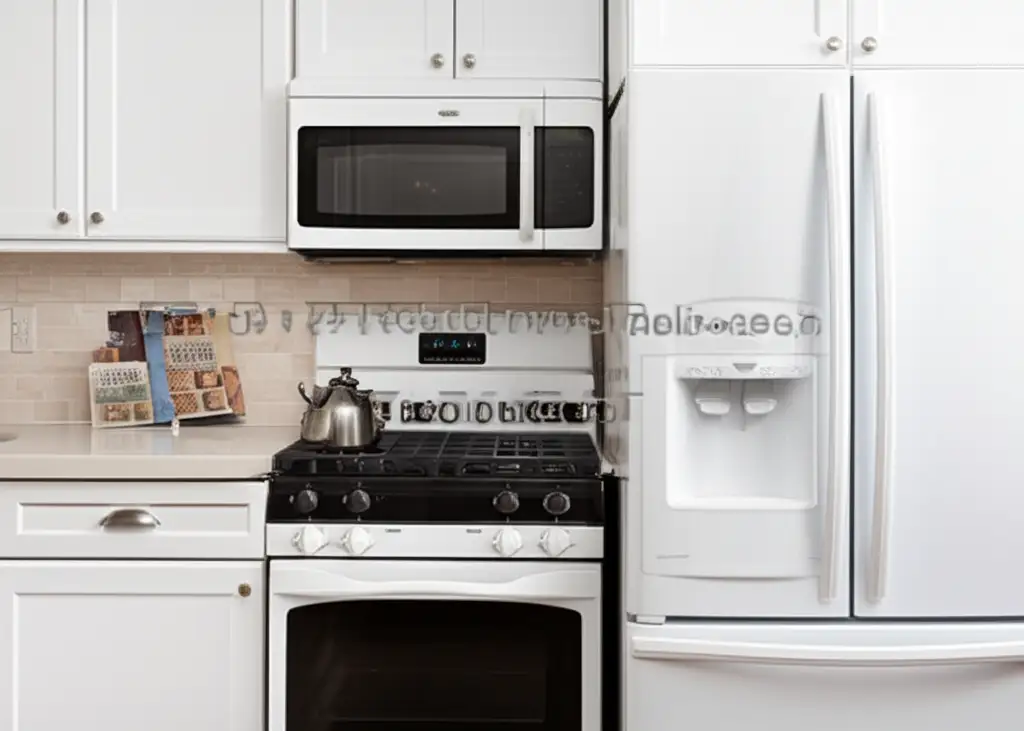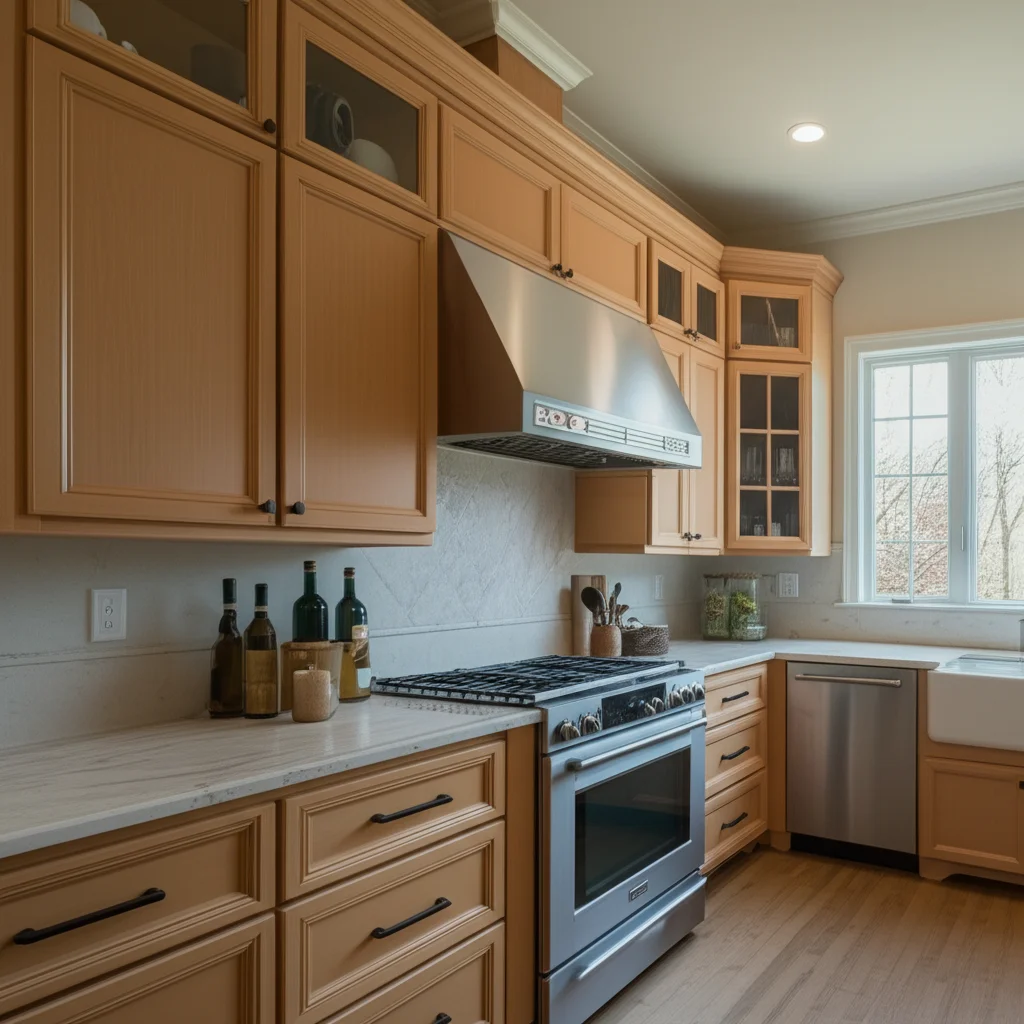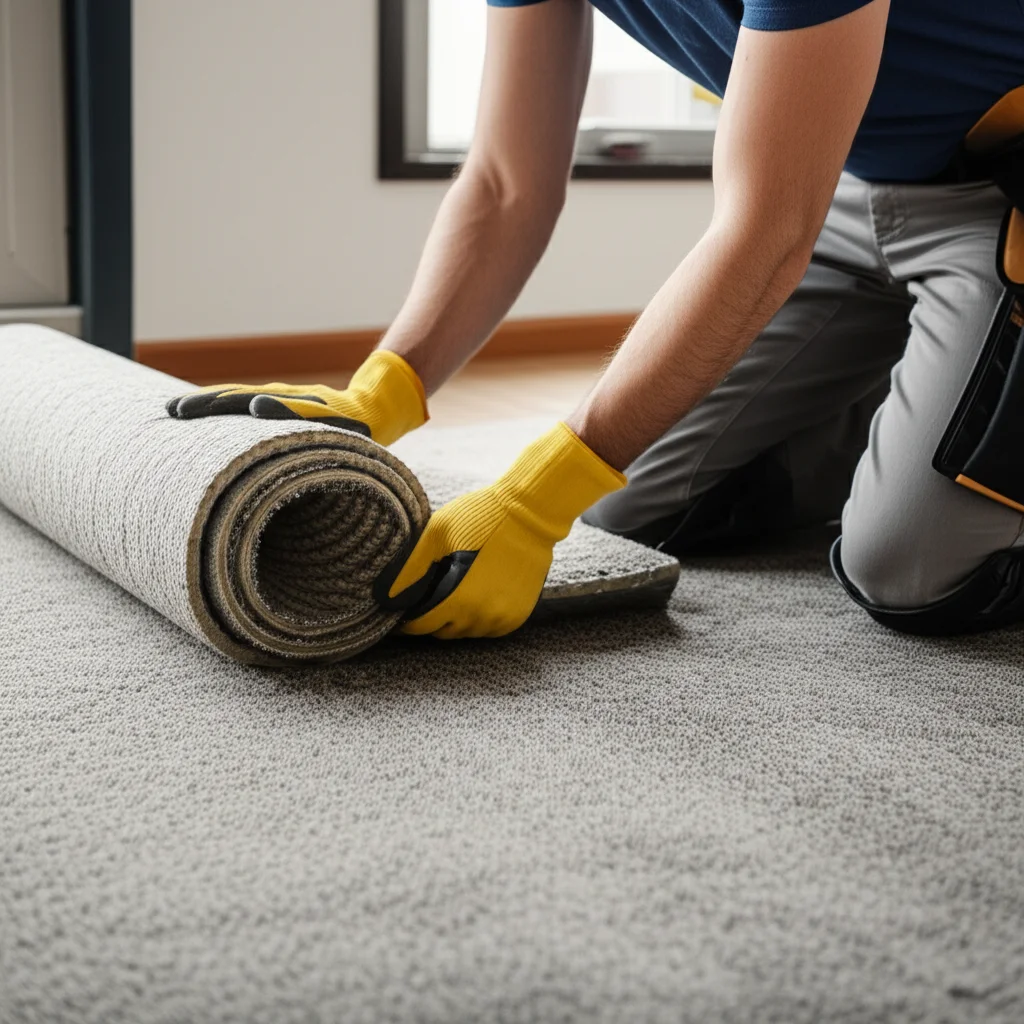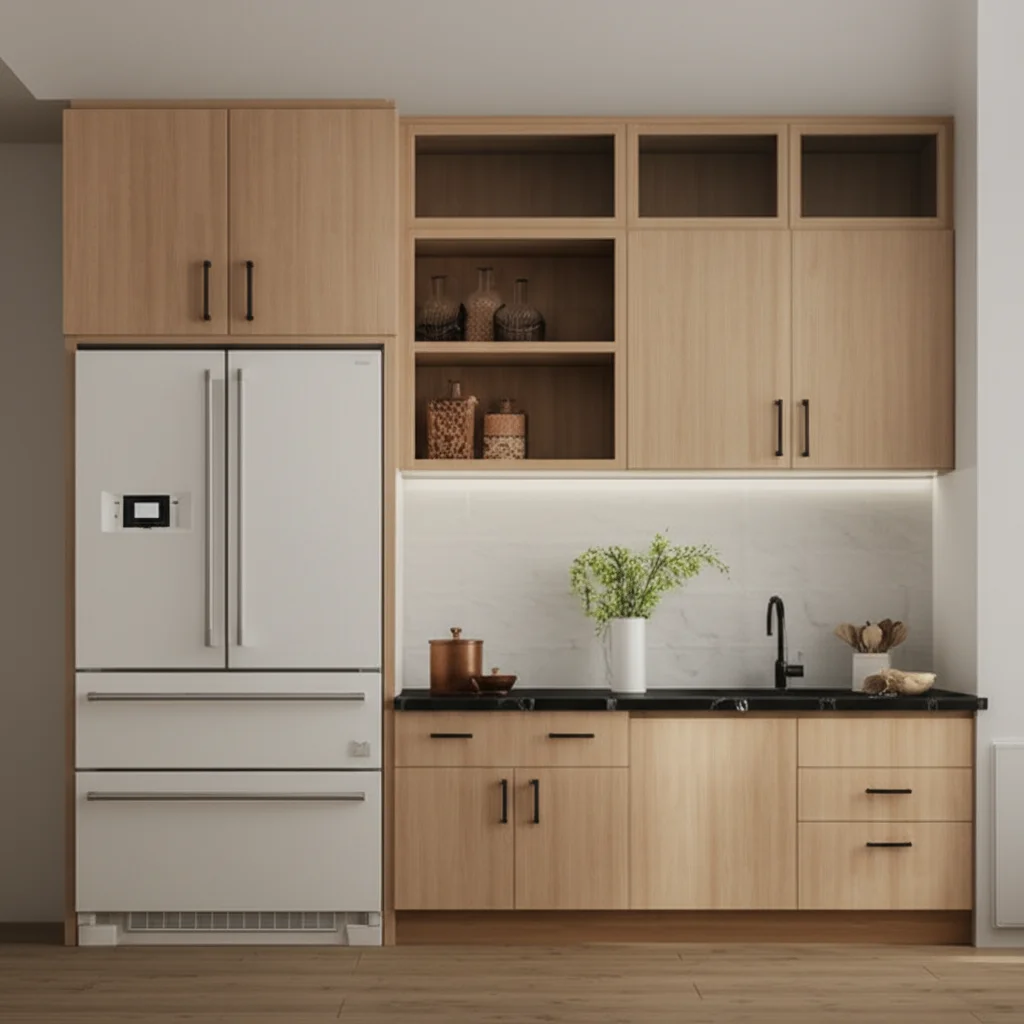· Todd Martin · Kitchen Design · 20 min read
How To Support A Waterfall Countertop
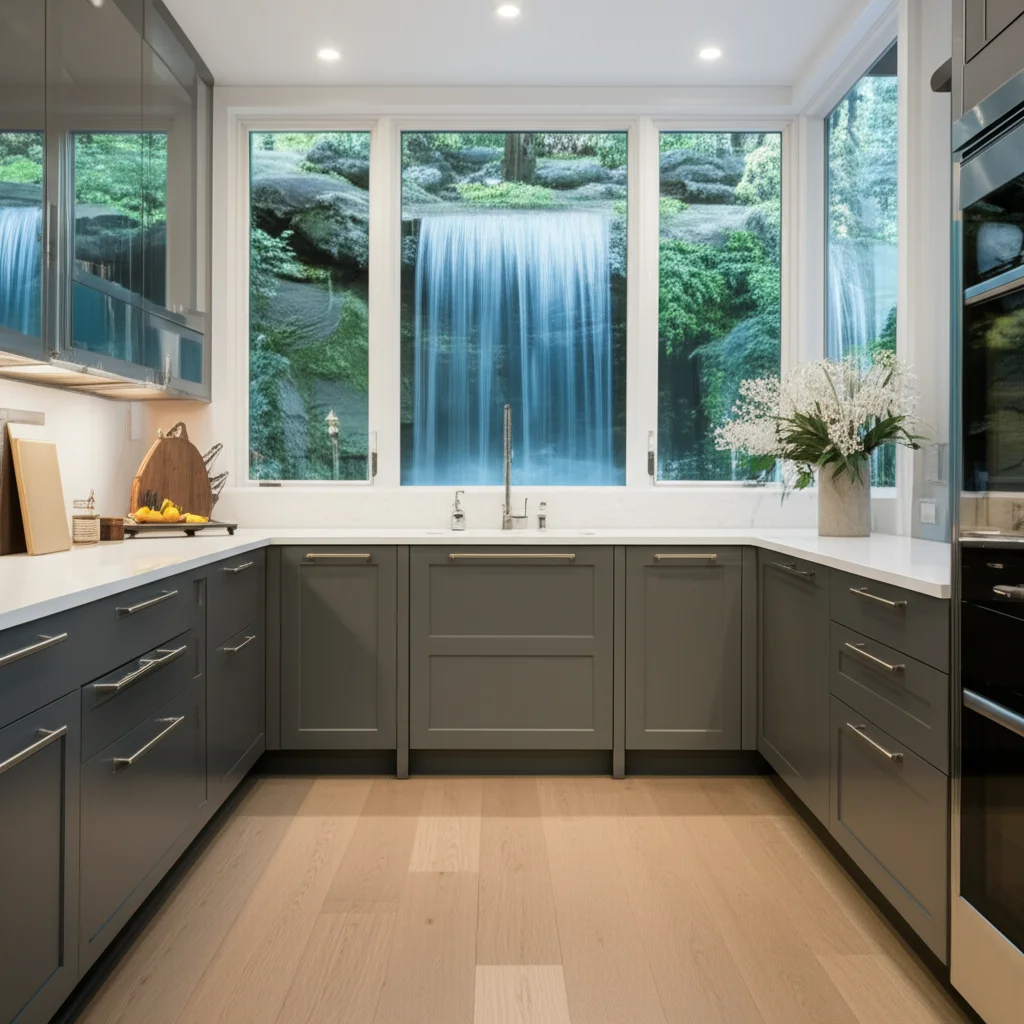
Mastering Waterfall Countertop Support: A Comprehensive Guide
A waterfall countertop creates a dramatic, clean line in any kitchen or living space. Its side panel extends from the counter’s surface down to the floor, mimicking a cascading waterfall. This design feature requires proper support for stability and safety. Knowing how to support a waterfall countertop is key to a successful installation. We will explore the various methods and considerations needed for this stunning design element. This article will guide you through understanding support needs, choosing materials, and ensuring a lasting result.
Takeaway
Properly supporting a waterfall countertop is crucial for its stability and longevity. Key takeaways include:
- Assess Weight and Material: Heavier materials like natural stone require more robust support.
- Choose the Right Brackets: Steel plates, L-brackets, and continuous channels offer different support levels.
- Ensure Substrate Strength: The base cabinet or structure must handle the countertop’s weight.
- Secure Attachment: Use strong adhesives and mechanical fasteners for a firm bond.
- Consider Hidden Supports: Design supports to be invisible for a clean aesthetic.
To support a waterfall countertop, you must use strong internal and external bracing. This involves securing the horizontal counter to the base cabinets and reinforcing the vertical panel. Heavy-duty steel brackets, plywood substrates, and structural framing provide the necessary strength. This ensures the countertop remains stable and safe for everyday use.
Understanding Waterfall Countertop Mechanics and Support Needs
Waterfall countertops add a touch of luxury to a modern kitchen. They feature a seamless transition from the horizontal countertop surface to a vertical panel, extending to the floor. This design creates a striking visual effect. However, the unique structure also brings specific support challenges. The vertical “waterfall” section bears significant weight, especially if made from heavy materials like granite or quartz.
The main concern is preventing the vertical piece from cracking or detaching from the main counter. Gravity constantly pulls down on this extended section. Without proper support, stress points can develop, leading to damage over time. This makes understanding load distribution vital. The support system must distribute the countertop’s weight evenly. It must also resist lateral forces.
Different countertop materials have varied strength and flexibility. Natural stone, for example, is strong under compression but can be brittle under tension or impact. Engineered stone like quartz offers more consistency but still requires careful handling. Laminate or solid surface materials are lighter but still need a stable base to prevent sagging. The material type directly influences the specific support solution you choose. We must consider the weight of the material per square foot.
The support system needs to handle both static loads (the weight of the countertop itself) and dynamic loads (items placed on it, people leaning on it). This ensures the countertop remains stable for years. A well-designed support system is often invisible, preserving the clean lines of the waterfall design. Hidden supports maintain the aesthetic appeal. Ignoring proper support can lead to costly repairs or even safety hazards.
Key Principles for Robust Waterfall Countertop Support
Creating a stable waterfall countertop relies on several core principles. These principles ensure the structure can withstand its own weight and daily use. First, the foundation must be strong. This means the base cabinets or island structure must be well-built and securely anchored to the floor. Think of it like building a house; a solid foundation prevents future problems.
Next, weight distribution is crucial. The weight of the countertop, especially the heavy stone variety, needs to spread across the supporting structure. Concentrated stress points can lead to cracks or breaks. Fabricators often design the support system to distribute the load broadly. They avoid placing all the weight on a single small area. This helps prevent material failure.
Consider the cantilever effect. A waterfall edge often extends beyond the cabinet base. This creates a cantilevered section. This section requires extra support to prevent it from tipping or sagging. Brackets, steel plates, or a hidden framework can counteract this effect. For example, just as you might add support to a bed frame to prevent sagging, a countertop needs similar reinforcement for its extended sections.
Finally, proper adhesion and mechanical fastening are essential. Adhesives like epoxy or silicone create a strong bond between the countertop pieces and the support. Mechanical fasteners, such as screws or bolts, provide additional reinforcement. They lock the components together. This combination ensures the countertop remains rigid and secure. These principles apply whether you are installing a new countertop or reinforcing an existing one. Prioritizing these steps ensures a durable and safe waterfall countertop.
Types of Support Systems for Waterfall Countertops
Several types of support systems exist for waterfall countertops. The choice depends on the countertop material, weight, and design. Each system offers unique benefits and installation considerations. Understanding these options helps in selecting the most effective support.
Steel Plate Supports
Steel plates are a common and effective solution. These are flat, heavy-gauge steel pieces. Fabricators often embed them into the sub-decking or the cabinet structure. They extend under the horizontal countertop and connect to the vertical waterfall panel. The plates provide continuous support. They distribute weight evenly. This prevents sagging or cracking, especially with heavy stone. Steel plates can be powder-coated or treated to resist rust. They remain hidden once the countertop is installed.
L-Brackets and Gussets
L-brackets are another popular option. These metal brackets form an “L” shape. They attach to the cabinet interior and support the underside of the countertop. For waterfall designs, specialized heavy-duty L-brackets may be used to reinforce the joint where the horizontal and vertical pieces meet. Gussets are triangular pieces of material that strengthen a joint. They can be added to L-brackets for extra rigidity. While effective, visible L-brackets may detract from the seamless look of a waterfall design. Thus, they are often used where they can be concealed.
Structural Plywood Substrate
A strong plywood substrate can be part of the support system. This involves using a thick layer of marine-grade plywood beneath the countertop material. The plywood itself adds rigidity and helps distribute weight. For waterfall edges, the plywood can extend down to form the core of the vertical panel. The stone or chosen material then adheres to this plywood base. This method creates a very solid core. It also provides a good surface for bonding the countertop material. This approach is common with thinner stone slabs or engineered materials.
Metal Framing or Skeleton Systems
For very large or heavy waterfall countertops, a full metal framing or skeleton system might be necessary. This involves welding a custom steel frame that mirrors the shape of the countertop. The frame provides comprehensive support for both the horizontal and vertical sections. It can be designed to bolt directly to the floor and wall studs. The countertop material then attaches to this metal skeleton. This method offers the highest level of structural integrity. It is often used in commercial settings or with exceptionally large residential islands. It provides robust support, similar to how one might make a center support for a bed frame for maximum stability.
Adhesive and Mechanical Fasteners
No matter the support system, strong adhesives and mechanical fasteners are vital. Epoxy resins or specialized silicone sealants are used to bond the countertop material to the support. These adhesives create a durable, permanent connection. Mechanical fasteners, such as screws or bolts, provide additional security. They can anchor the support system to the cabinets or floor. This combination ensures the countertop does not shift or separate over time. Proper application of these elements is critical for the long-term stability of your waterfall countertop.
Material Considerations and Their Impact on Support
The type of material you choose for your waterfall countertop directly influences the support required. Different materials have varying densities, strengths, and flexibilities. Understanding these properties helps ensure adequate and safe support.
Natural Stone (Granite, Marble, Quartzite)
Natural stone, like granite, marble, or quartzite, is incredibly heavy. These materials are also strong under compression. However, they can be brittle and prone to cracking under tension or impact, especially around edges or unsupported areas. This means granite waterfall countertops and their counterparts need robust and continuous support. Steel plates or a full metal frame are often essential. The support must prevent any flexing or vibration that could cause the stone to crack. Fabrication of natural stone also involves careful templating and cutting. This ensures minimal stress on the slab itself. Large spans or overhangs with natural stone will always demand extra reinforcement.
Engineered Stone (Quartz)
Quartz countertops are engineered stone products. They consist of crushed quartz mixed with resins. Quartz is generally more uniform in strength and less porous than natural stone. It is also quite heavy, though sometimes slightly less dense than granite. A quartz waterfall countertop still requires significant support. While it might be less prone to sudden cracking than natural stone, continuous underlying support is still crucial. Steel plates or a strong plywood sub-deck are common choices. The resin content in quartz makes it slightly more flexible than natural stone. However, you should not rely on this flexibility for support. It still needs a rigid base to prevent sagging or stress over time.
Solid Surface (Corian, etc.)
Solid surface materials are lighter than natural or engineered stone. They are also more flexible. This material type is less prone to cracking. However, it can still sag if not properly supported over large spans. The support requirements are generally less demanding than for stone. A strong plywood sub-deck is often sufficient. L-brackets can also provide additional support where needed. The ease of fabrication with solid surface materials allows for more creative support integration. Adhesives work very well with solid surface. This creates seamless joints that can add to the structural integrity.
Laminate and Wood
Laminate countertops are the lightest option. They typically consist of a particleboard or MDF core with a decorative laminate layer. While light, they can warp or sag if not properly supported. A continuous plywood sub-deck is almost always used with laminate waterfall designs. This provides the necessary rigidity. Wood countertops, such as butcher block, are also lighter than stone. They need support to prevent warping or cupping. A robust framework underneath is essential. For wood, also consider how to attach wood countertop to cabinet directly for stability. Wood can expand and contract with humidity changes. This factor must be accommodated in the support design. This prevents stress on fasteners or joints.
In summary, the heavier and more brittle the material, the more extensive and rigid the support system must be. Lighter and more flexible materials still need support to prevent sagging or warping over time. Always consider the specific properties of your chosen material when planning support.
Installation Best Practices for Waterfall Countertop Support
Proper installation is paramount for the stability and longevity of your waterfall countertop. This involves careful planning, precise execution, and attention to detail. Skipping steps during installation can compromise the entire structure.
Prepare the Base Cabinets and Substrate
The first step is to ensure your base cabinets or island structure are perfectly level and plumb. Any unevenness will transfer to the countertop. This can create stress points. Reinforce the cabinet tops with plywood or additional blocking if necessary. This creates a solid, flat surface for the horizontal countertop. For the vertical waterfall panel, ensure the floor area is also level and clean. The cabinet and floor prepare the stage for the countertop.
Next, install any necessary plywood sub-decking. This sub-decking should be securely fastened to the cabinets using screws. It provides a continuous, rigid base for the countertop. The sub-deck helps distribute the weight of the countertop evenly across the cabinets. This is especially important for heavy stone materials. Ensure the plywood extends to the edges where the waterfall panel will connect.
Secure the Horizontal Countertop
Once the base is ready, place the horizontal countertop slab. Use shims to achieve a perfect level if needed. Then, mechanically fasten the countertop to the cabinets or sub-deck. Use clips, screws, or L-brackets designed for countertop installation. For natural stone, typically use special epoxy or silicone to adhere it to the sub-deck. The fasteners provide added security. This attachment ensures the main surface does not shift or lift. Ensure this connection is strong, as it bears the weight of the entire counter.
Installing the Vertical Waterfall Panel
The vertical waterfall panel requires specific attention. It must be perfectly aligned with the horizontal slab. Fabricators often create a mitered joint where the two pieces meet. This creates a seamless appearance. This joint needs to be extremely precise. Once aligned, apply a strong structural adhesive, like epoxy, along the mitered edge. Clamp the two pieces together firmly while the adhesive cures. This bond is crucial for the integrity of the waterfall.
For added support, especially with heavy materials, integrate steel plates or a hidden metal frame. These supports are typically installed before the vertical panel is permanently set. They are often embedded within the structure behind the panel. They connect the horizontal counter to the floor or cabinet base. These hidden supports bear the load of the vertical panel. They prevent it from detaching or cracking at the joint. Ensure these supports are anchored securely to the floor or wall studs. Just as you might fix metal bed frame support for structural stability, ensuring the waterfall support is robust is equally vital.
Curing and Finishing
Allow all adhesives and sealants to cure fully according to the manufacturer’s instructions. This step is critical for strength. Do not place heavy objects on the countertop or stress the joint during this time. Once cured, the joint can be polished to match the rest of the surface, if applicable. A proper finish ensures the seamless look and protects the joint from moisture. Inspect the entire installation for stability. Push on the countertop from different angles. It should feel solid and show no movement.
Avoiding Common Support Mistakes
Installing a waterfall countertop requires precision. Many common mistakes can compromise its stability and appearance. Being aware of these pitfalls helps ensure a successful project. Avoiding these errors saves time and money in the long run.
One major mistake is underestimating the weight of the material. Natural stone, especially, is incredibly heavy. Many DIYers and even some contractors fail to calculate the true weight. This leads to insufficient support structures. Always get the exact weight per square foot for your chosen slab. Factor this into your support calculations. A structure designed for laminate will not hold granite.
Another common error is not reinforcing the existing cabinetry. Standard base cabinets are designed to hold the weight of a countertop from above. They are not always built to handle significant cantilevered loads or the pull of a vertical panel. You must add internal bracing or blocking to the cabinets. This strengthens them. Ensure the cabinets are securely fastened to the floor or wall studs. This prevents them from tipping.
Improper adhesive application is a frequent issue. Using the wrong type of adhesive, or not applying enough, can lead to joint failure. The mitered joint on a waterfall countertop is a critical stress point. It needs strong, flexible, and waterproof adhesive. Read product labels carefully. Apply adhesive uniformly. Do not rush the curing process. Allow sufficient time for the bond to fully strengthen before applying any load.
Ignoring the substrate or sub-decking is another pitfall. A strong, level sub-deck made of plywood or MDF is essential. It provides a continuous, rigid surface for the countertop. Without it, point loads can cause the countertop to crack or sag between support points. The sub-deck also provides a good surface for mechanical fasteners. It helps to attach the wood countertop to the cabinet securely.
Finally, neglecting hidden supports can lead to long-term problems. The beauty of a waterfall countertop lies in its seamless appearance. This means supports must often be hidden. Failure to install steel plates, hidden brackets, or a structural frame means the waterfall panel relies solely on the mitered joint for support. This joint alone is usually not strong enough for heavy materials. Always plan for and integrate robust, concealed supports. This prevents cracking or separation of the vertical panel.
Professional vs. DIY: When to Call in Experts
Deciding whether to install a waterfall countertop yourself or hire a professional is a significant choice. While some aspects of home improvement lend themselves well to DIY, waterfall countertops present unique challenges. Understanding when to call in experts ensures safety, quality, and a lasting result.
DIY projects can be rewarding. You save money on labor costs. You also gain a sense of accomplishment. If you have extensive experience with carpentry, precision cutting, and heavy material handling, you might consider a DIY approach. Projects involving lighter materials like laminate or thinner solid surfaces may be more feasible for an experienced DIYer. You will need specialized tools for cutting, polishing, and precise leveling. These tools might include large saws, grinders, and heavy-duty clamps.
However, waterfall countertop installation is complex. It requires exact measurements and precise cuts. Even a small error can ruin an expensive slab of stone. Professional countertop fabricators and installers possess specialized equipment and expertise. They have years of experience handling heavy, brittle materials like granite and quartz. They know how to account for the weight, structural integrity, and specific needs of different stone types. They also understand the nuances of creating seamless mitered joints and integrating hidden support systems effectively.
For heavy materials such as natural stone or engineered quartz, hiring a professional is strongly recommended. The sheer weight of these slabs makes them dangerous to handle without proper equipment and manpower. An incorrect lift or bump can result in a broken slab or serious injury. Professionals also have the necessary insurance. This protects you if something goes wrong during installation.
Professionals ensure the support system is correctly designed and installed. They understand load-bearing principles. They also know which type of support, like steel plates or internal framing, is best for your specific material and design. They can custom-fabricate supports that are both strong and invisible. This maintains the clean aesthetic of a waterfall design.
Consider the potential costs of failure. A cracked stone slab means reordering expensive material and redoing labor. This often costs more than hiring a professional initially. If you want a flawless finish and peace of mind, especially with high-value materials, engaging experienced professionals is the best choice. They ensure your beautiful waterfall countertop is both stunning and structurally sound.
Long-Term Maintenance and Care for Your Supported Waterfall Countertop
Once your waterfall countertop is properly installed and supported, ongoing maintenance ensures its beauty and longevity. While the support structure itself requires minimal attention after installation, the countertop surface needs regular care. This helps protect the material and preserve the seamless look.
Regular cleaning is a fundamental part of maintenance. Use appropriate cleaners for your specific countertop material. For example, mild soap and water are often sufficient for most surfaces. Avoid harsh chemicals, abrasive scrubbers, or acidic cleaners, especially on natural stone or quartz. These can damage the finish or sealant. Wipe up spills immediately to prevent staining. For specific materials, you might consult guides on how to clean a quartz countertop or how to clean a butcher block countertop, as care varies.
Protect the surface from heat and scratches. Always use trivets or hot pads under hot pots and pans. While many countertop materials are heat-resistant, sudden temperature changes can cause thermal shock. This can lead to cracking, especially in natural stone. Use cutting boards for food preparation. Do not cut directly on the countertop surface. Even durable materials like quartz can scratch with sharp knives.
For natural stone countertops, consider periodic sealing. Granite and marble are porous materials. Sealants help prevent stains and make cleaning easier. The frequency of sealing depends on the stone type and how much use the countertop receives. Your installer can advise on the best sealing schedule. Quartz countertops typically do not require sealing.
Inspect the mitered joint and the surrounding area periodically. Look for any signs of separation, cracking, or movement. While rare with proper support, early detection can prevent minor issues from becoming major problems. If you notice any issues, contact your installer or a professional fabricator immediately. They can assess the situation and recommend repairs.
Avoid placing excessive weight on the cantilevered or unsupported sections of the countertop. While your support system is designed to handle daily loads, extreme stress can still cause damage. Do not stand or sit on the countertop. Do not place extremely heavy appliances on the waterfall edge.
Finally, manage humidity and temperature in your home. Extreme fluctuations can affect wood substrates or cabinets over time. Maintaining a stable indoor environment helps preserve the integrity of your entire kitchen structure, including the countertop. Following these simple care steps ensures your beautiful waterfall countertop remains a stunning and functional feature for many years.
FAQ Section
Q1: What is the most critical part of supporting a waterfall countertop?
A1: The most critical part is ensuring a strong, continuous support system under both the horizontal and vertical sections. This often involves robust steel plates or a hidden structural frame. It also means having a perfectly level and reinforced base cabinet or island structure. The bond at the mitered joint is also vital.
Q2: Can I install a waterfall countertop myself?
A2: Installing a waterfall countertop is a complex task. It requires precision, specialized tools, and knowledge of weight distribution. For heavy materials like stone, it’s safer and more reliable to hire a professional fabricator and installer. DIY is generally not recommended for these types of countertops unless you have extensive experience.
Q3: How do you hide the support for a waterfall countertop?
A3: Hidden supports are key to the waterfall aesthetic. They are typically concealed within the cabinet structure or embedded into the sub-decking. Steel plates are often bolted to the cabinet and extend under the countertop. Custom metal frames can also be built inside the cabinet, providing invisible support for the vertical panel.
Q4: Do all countertop materials require the same level of support for a waterfall edge?
A4: No, different materials require varying levels of support. Heavier and more brittle materials like natural stone (granite, marble, quartzite) need the most robust and continuous support. Lighter materials like laminate or solid surface can use simpler support systems, but still require a rigid base to prevent sagging or warping.
Q5: What is a mitered joint in a waterfall countertop?
A5: A mitered joint is a specialized cut where the horizontal countertop meets the vertical waterfall panel. Both pieces are cut at a 45-degree angle, creating a seamless 90-degree corner when joined. This joint is often bonded with strong epoxy and then polished to create the illusion of a single, continuous piece of material.
Q6: How does the support system prevent cracking in a waterfall countertop?
A6: The support system prevents cracking by distributing the countertop’s weight evenly and preventing undue stress concentrations. It minimizes flex, vibration, and downward pressure on vulnerable areas, especially the mitered joint. By holding the countertop rigidly, it prevents the material from bending or experiencing tension that could lead to cracks.
Conclusion
Creating a stunning and stable waterfall countertop requires careful planning and robust support. We have explored the unique mechanics of these beautiful design elements. We looked at why comprehensive support is not just an option, but a necessity. From understanding load distribution to selecting the right materials and choosing appropriate support systems, every step contributes to the countertop’s integrity. Remember, options range from hidden steel plates to full structural frames, each suited to different materials and design needs.
Whether you are opting for the heavy elegance of a granite waterfall countertop or the sleek look of quartz, the principles of solid anchoring and continuous support remain paramount. Proper installation practices, including meticulous leveling and strong adhesive bonds, will ensure your countertop stands the test of time. By avoiding common mistakes and knowing when to enlist professional help, you can achieve a flawless and durable result. With the right approach to how to support a waterfall countertop, your kitchen will feature a safe, beautiful, and lasting design centerpiece. Embrace these insights to make your waterfall dreams a strong reality.
- waterfall countertop support
- countertop installation
- kitchen design
- structural support
- hidden brackets
- stone countertops
- home renovation


